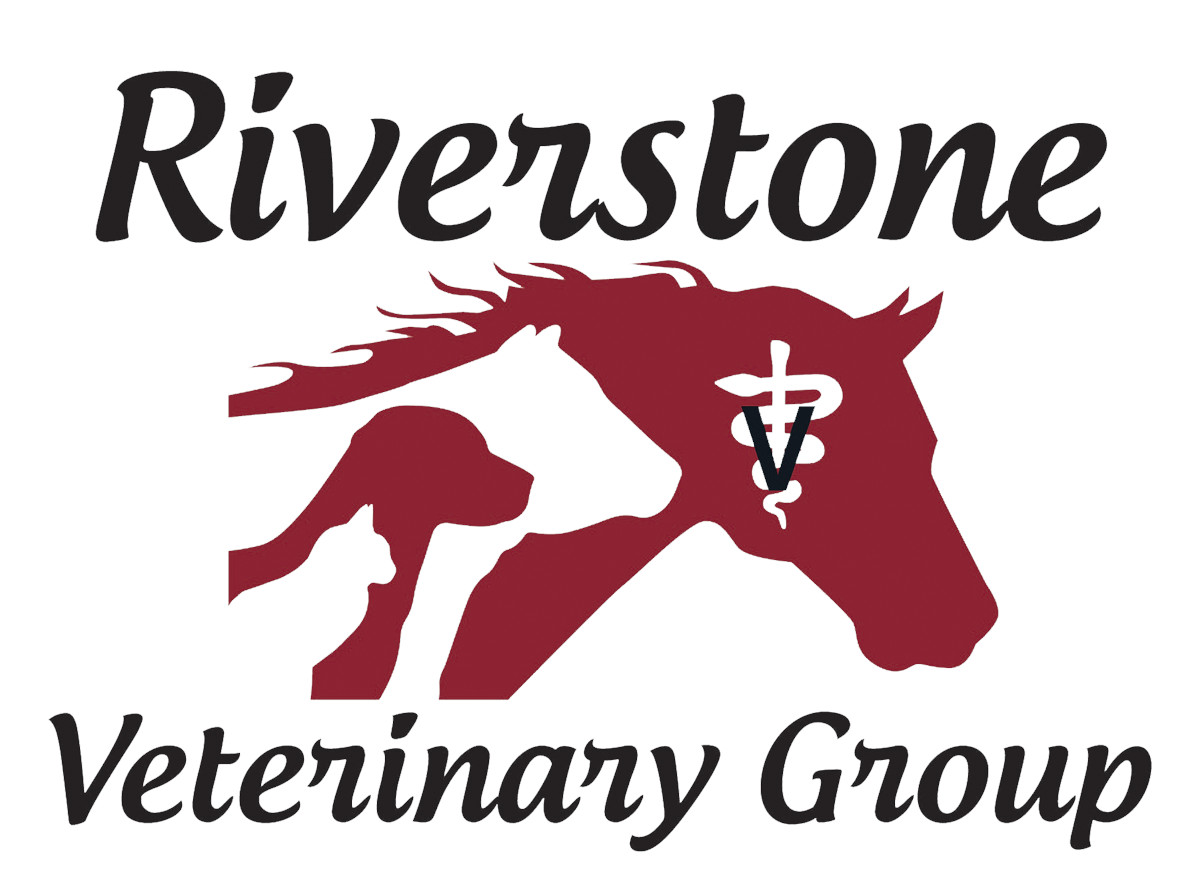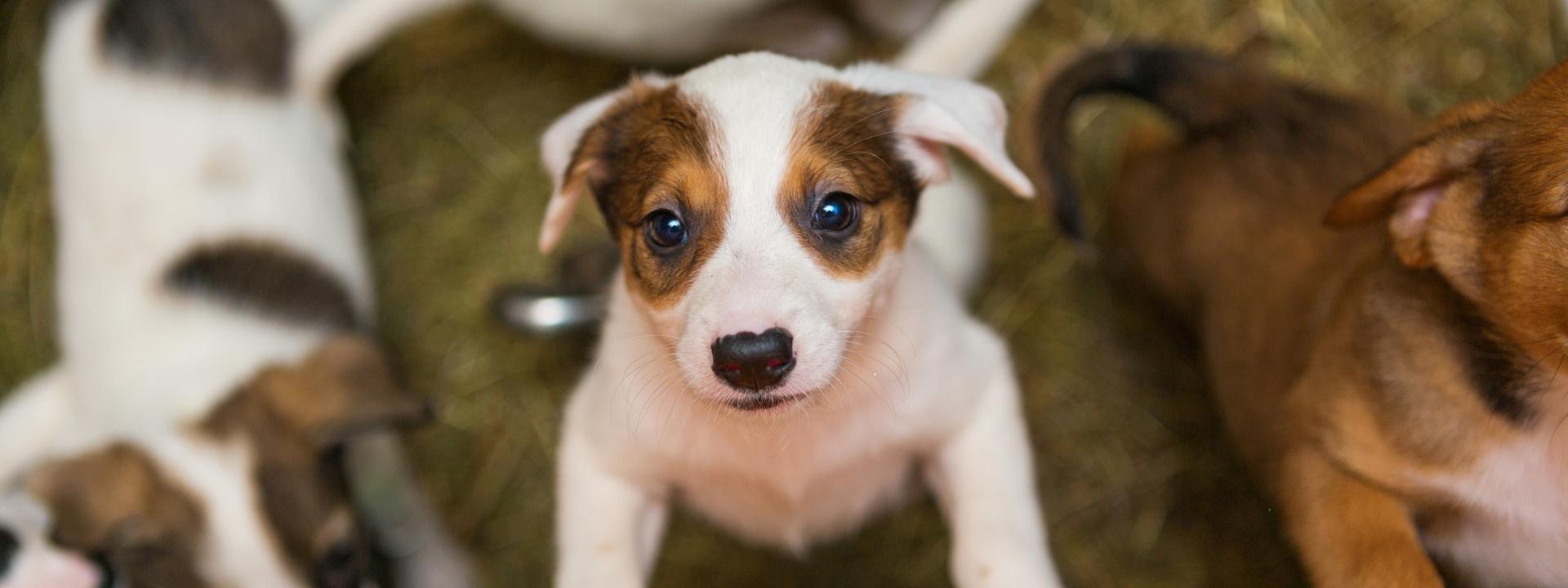The holidays are behind us and, if you’re like a good portion of our country or even the world, you may very well have brought a new puppy or dog home. You’ve got their dog bed in the perfect spot, you’ve hopefully found a nutritious brand of dog food they like, you’ve set up your veterinary appointment and gotten them on a vaccination schedule, and you’ve surely had your share of top-to-bottom face kisses. You’ve likely even begun training or hired a trainer. Good on you! A well-trained dog will make for a long and peaceful coexistence between you and your new fur friend.
Two things you might not have considered or perhaps even heard about in reference to dogs are socialization and enrichment. Those words might sound a little hoity-toity for a pet that does their business outside but bear with us on this. These are two concepts that are often overlooked and, because of that, the dog could end up bored or ill-behaved (or ill-behaved because they’re bored!). As veterinarians, we see dogs rehomed far too often for behavior that could have been nipped in the bud with some enrichment and socialization, which is why we’ve shared some of our know-how on these concepts below.
Why are training and socialization essential?
We won’t get into training as much in this article, but dog training and socialization tend to go hand in hand, so we’ll touch on it a bit. Getting a good training relationship with your dog as early as possible is probably one of the most valuable things you can do for your pet. Think about it this way—we are two species trying to live in the same environment with very different social structures and communication methods. Creating a form of communication with them and setting expectations as early as possible can make a massive difference in the quality of life and the dog’s health over their lifetime. We are not overstating this! Socialization plays a huge role in this. If you rescued a puppy after what’s considered by most veterinarians to be the prime socialization period, or perhaps you adopted an older dog, don’t fret. When you have the opportunity to do so, that’s great. But there are still plenty of ways you can help an older dog with training and socialization.
What exactly is socialization?
Most people assume socialization is having a new puppy meet as many dogs and people as possible as soon as possible. And although that is an excellent idea once your pup has their first round of immunizations and you do this socializing in a controlled environment, these doggo or puppy playdates are less than half of what socialization's really about. Socialization is starting to understand the world as a safe place. You must expose your pup or pooch to different types of environments, whether it’s the water or the woods. You even want them to experience various kinds of surfaces, not just grass, concrete, and rocks. This might sound trivial, but the more we can expose dogs or puppies to positive experiences early on, the better things will go for that dog and, in turn, the better they will go for you.
The critical socialization period in dogs is three weeks to three months, although there is some flexibility on either end, depending on the dog, the breed, and genetics. In general, though, that critical socialization period starts around three to four weeks. These early life experiences make a profound difference in the rest of their life. So if you are looking into a breeder situation and are evaluating those breeders in terms of what they're doing for early socialization, this can make a big difference. You don’t want your dog to be afraid of the world, as a scared dog can be a biting dog in certain situations, so exposure early and often is super beneficial.
In addition to the environmental exposure, show them different people in various scenarios—a person in a wheelchair, a person wearing a hat, different clothing types, different types of people, people on crutches, and other types of things that may move around them in the environment such as bikes and skateboards. As veterinarians, we want your dog or your puppy to meet other people and other dogs, but, again, that’s just a fraction of socialization.
What is enrichment, and why is it important?
Enrichment is one of the most important things you can do for your pet. It’s easy to think, “Oh, my dog's happy sleeping on the couch while I'm gone because that's what dogs do.” And in some ways, that's true, but it's imperative to think about the fact that our dogs are intelligent creatures that need stimulation. Yes, even your dog that gets into the trash and walks around with a bucket on his head! Don’t panic and assume that we’re recommending 24 hours of entertainment a day, but it does mean that we need to consider incorporating that in our daily lives. And it doesn't have to be labor-intensive, as there are so many different YouTube videos on DIY enrichment.
It could be as simple as an interactive puzzle, a DIY obstacle course, a toy that dispenses treats while playing, or even taking a cardboard box and feeding half of your dog's dinner in there mixed with some paper shreds. The latter is so they have to dig around and tear a little bit to get their dinner for the night. Activities like this should always be supervised, as you don’t want your dog consuming things they're not supposed to. Enrichment equates to working your dog's brain and making their life more than just eating, drinking, and sleeping in the confines of your home. We know you have to rush some dog walks because you have to get to work, etc., but when you have the time, take your dog on a nice, long, slow walk or hike and really let them sniff around—dogs are olfactory creatures!
When should I punish a behavior?
Never! Not punishing your pup might sound counterintuitive, as puppies can surely push our buttons by getting into things, chewing things, and eating things they're not supposed to—what we need to teach them is what you want them to do instead. Just as with kids, it’s about redirection. What sort of behaviors do you want in your environment? If you simply tell your puppy, "I don't want you to chew on the couch," that does nothing. They don't understand that. Instead, say, "Hey, chew on this. This is a good idea." Or, "I don't want you to pee in my living room; let’s pee outside and make it a fun experience,” perhaps even with treats when first getting started. We want to reinforce those behaviors that we like to keep the peace and to keep your dog safe.
Punishment doesn't work. Punishment tells them in the moment that something terrifying happens when they pee on the carpet, but it doesn't teach them what you want them to do in the long haul. And all it does is damage your relationship with your puppy.
If you need further inspiration on ways to go about enriching and/or socializing your new pup or dog, feel free to give us a call!

